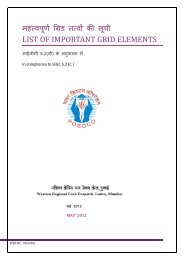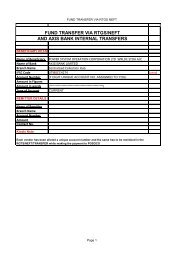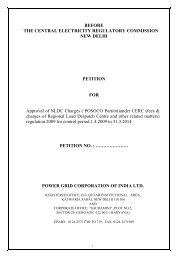ABC of ABT - MP Power generating company limited
ABC of ABT - MP Power generating company limited
ABC of ABT - MP Power generating company limited
Create successful ePaper yourself
Turn your PDF publications into a flip-book with our unique Google optimized e-Paper software.
mostly located at load-centres and have a higher variable cost as comparedto Central stations, which are mostly pit-head. In the earlier regime (pre-<strong>ABT</strong>),in case an SEB reduced its drawal from Central stations, its payment liabilitycame down at the composite rate (fixed + variable cost) <strong>of</strong> those stations. TheSEBs, therefore, made an uneven comparison: variable cost <strong>of</strong> their ownstations versus composite cost <strong>of</strong> Central stations, and did not back downtheir own stations if former was lower, even if it was higher than the variablecost <strong>of</strong> Central stations. In effect, the merit order was being distorted andgeneration was not being optimized. The position has now radically changed.The SEBs compare only the variable costs, and ask intra-State stations toback down during <strong>of</strong>f-peak hours. These stations, however, are reluctant toback down (due to continuation <strong>of</strong> single-part tariff for them, whichdiscourages such backing down) and SLDCs face problems. The remedy liesin implementation <strong>of</strong> Availability Tariff for all intra-State stations as well, andonly then would the States be able to achieve maximum optimization in theirown operation.Further, extension <strong>of</strong> the UI mechanism to the intra-State stations would getthem to respond to grid conditions on their own in the most desirable way.The States would be directly benefiting: higher power availability during peakloadhours, reduced load shedding, and a possibility <strong>of</strong> earning UI.All hydro-electric stations, to the extent possible with storage / pondagevolume available, should be scheduled to generate during hours <strong>of</strong> peaksystem demand and to shut <strong>of</strong>f / back down during <strong>of</strong>f-peak hours. Duringactual operation, they should back down any time the grid frequency tends torise and remain above a threshold even if it means deviating from theschedule advised by SLDC. Similarly, when frequency tends to be below thethreshold, the generation should be increased (even if not scheduled duringthose hours <strong>of</strong> the day). Further, bringing in <strong>of</strong> hydro generation should beheld up/deferred if frequency is rising, and backing down should be held updeferred if frequency is falling.32






